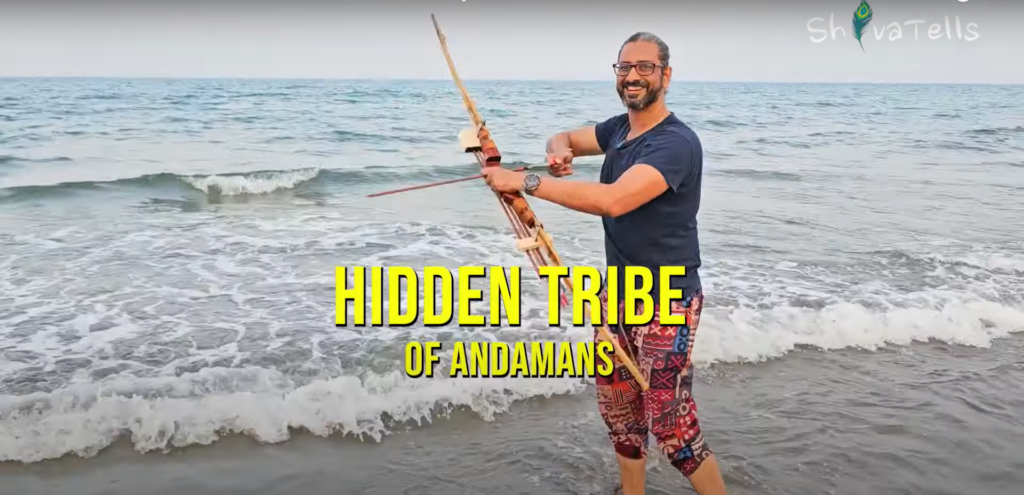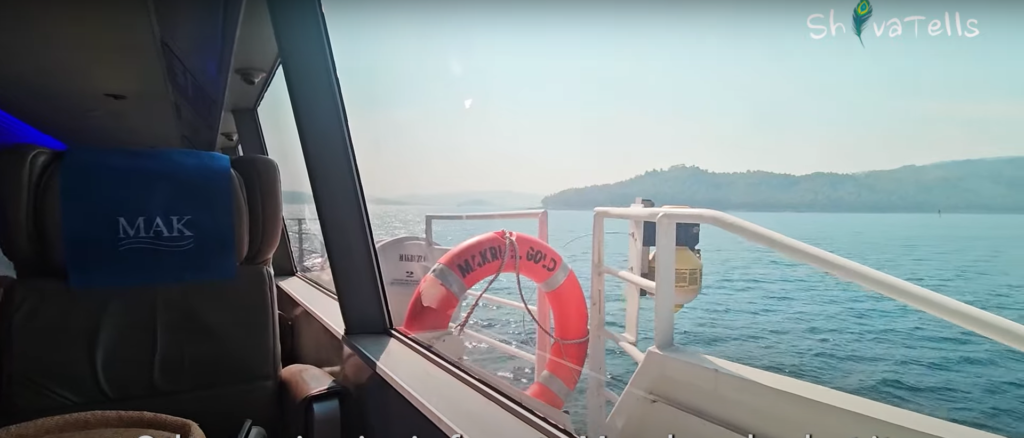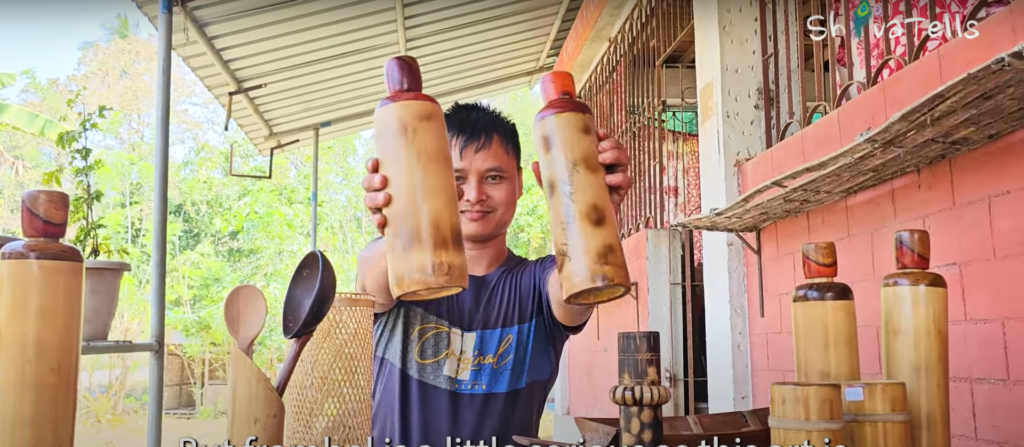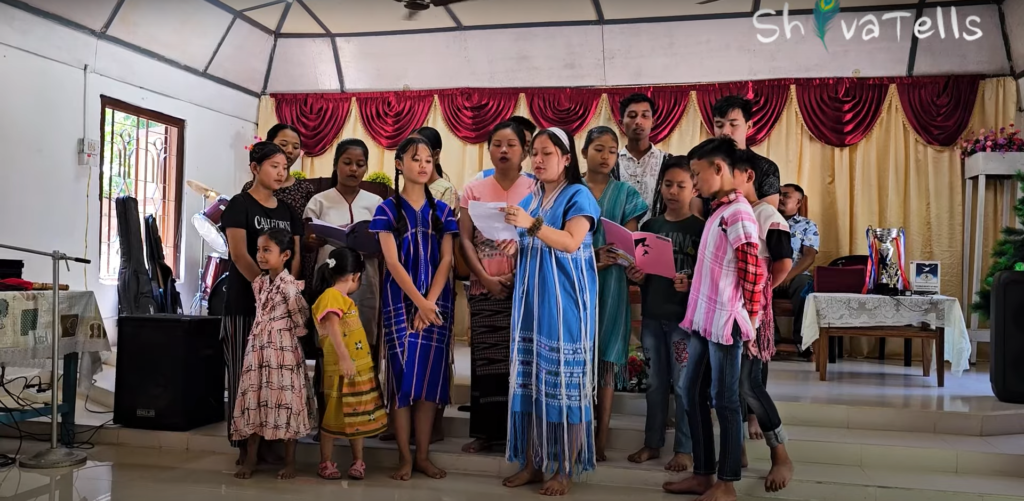The Andaman Sea shimmered like a million scattered diamonds under the midday sun. Turquoise waves lapped gently at the pristine white sand beach, whispering secrets carried on the warm ocean breeze. Palm trees swayed rhythmically, casting dappled shadows on the beach, a perfect postcard come to life. But for me, Shiva, adventurer extraordinaire, the beauty of the Andamans went far beyond the picture-perfect beaches. I craved the stories whispered by the wind, the hidden gems tucked away in the emerald embrace of the jungles. Today, my journey wasn’t about lounging on the beach with a cocktail in hand. Today, I was on the hunt for a hidden treasure – the Karen Tribe, a community with a rich history woven into the very fabric of the Andamans.

Table of Contents
Lost and Found: The Road to Webby Village

My first stop was a local bus ride from Port Blair, a bumpy but entertaining journey filled with classic Hindi tunes and the ever-changing scenery of the Andaman jungle. After a few hours, I reached the middle strait, where a ferry crossing awaited. Finally, after a detour (thanks to ferry!), I arrived at the junction where my homestay awaited.
John Sir, my host, welcomed me with open arms to his beautiful home built entirely from traditional bamboo. Nestled amidst the jungle and surrounded by fields, it was the perfect embodiment of island living. Most of the food here came straight from their organic farm, making for some of the most delicious and fresh meals I’ve ever had. Picture this: plucking tamarinds, working in the fields, and enjoying meals prepared with the freshest ingredients – a truly immersive experience!
The next day, fueled by a delicious breakfast and John Sir’s warm hospitality, I set off to explore the nearby village. It was a treasure trove of sights and sounds. One of the first things that caught my eye was a beautiful church, a testament to the Karen Tribe’s predominantly Christian faith. This also sparked my curiosity about their history.
Through conversations with the villagers, I learned about the Karen Tribe’s remarkable journey. A century ago, seeking a safe haven, 12 families from Burma arrived in the Andamans as laborers under the British administration. They settled in a dense jungle, aptly naming their new home “Webby Village,” which translates to “the hidden city.” Their initial struggles and determination to build a new life in this foreign land resonated deeply with me.
A Glimpse into Karen Culture: Art, Music, and Ancestral Connections

My exploration led me to the Andaman Karen Craft Center, a vibrant hub showcasing the Karen Tribe’s incredible artistry. From intricate baskets woven with meticulous precision to beautiful furniture that seemed to breathe life, their creations were a testament to their deep appreciation for bamboo. Sadly, this art form, passed down through generations, is facing extinction. However, a glimmer of hope emerged in the form of Mr. Shak, a passionate man who, despite not being Karen himself, has dedicated himself to learning and preserving these traditional art forms. He even used his skills to create a target for my archery practice – a testament to his resourcefulness and passion.
Speaking of archery, I had the opportunity to try my hand at this traditional skill using a bow and arrow crafted by Mr. Shak himself. Let’s just say my aim wasn’t exactly Robin Hood-worthy, but the experience was exhilarating nonetheless. Mr. Shak’s infectious enthusiasm and the thrill of attempting this ancient practice made it a truly unforgettable moment.
While archery tested my physical skills, the Karen Tribe’s folk songs touched my soul. The video featured a beautiful song called “Ho ba buffer please dar tha lele lele lele,” a celebration of victory and a poignant reminder of life’s uncertainties. It was a powerful reminder of the richness and depth of their cultural heritage, expressed through soulful melodies passed down through generations.
A Day with the Karen Tribe on Karma Tang Beach
The second part of my adventure took me to Maya Bandar, followed by a journey to the stunning, off-the-beaten-path Karma Tang beach. This hidden paradise wasn’t just visually captivating; it was also home to another Karen community.
Here, I spent a delightful day with Mr. Henry, a local resident, experiencing Karen culture firsthand. We savored traditional dishes like “moffat,” a sweet and savory rice cake that was an explosion of textures and flavors, and “mohinga,” a fish broth with rice noodles that was both comforting and delicious.
One of the most striking aspects of Karen women’s attire was the water they kept in their mouths and the local, hand-made cigars crafted from leaves and betel nut. While these traditions might seem unusual to outsiders, they represent a unique cultural identity that deserves respect and understanding.
Sustainable Fishing and Games on the Verge of Disappearance
The Karen Tribe’s respect for nature resonated in their sustainable fishing practices. We witnessed a clever bee trap they used, attracting bees with an egg to collect honey. Another fascinating technique involved a traditional fish trap made from bamboo, allowing fish to enter but hindering their escape. While seemingly simple, these methods showcased their deep understanding of the delicate balance between human needs and environmental responsibility.
Preserving a Legacy: The Fight to Keep Traditions Alive

However, not all aspects of their traditional way of life have thrived. Many games, once vibrant expressions of their culture, are disappearing. A sense of nostalgia filled the air as I learned about these fading traditions. Still, there were glimmers of hope. I witnessed a beautiful bamboo dance performed by both boys and girls. Filled with playful teasing and romantic songs, it was a captivating display of their cultural heritage. The rhythmic tapping of the bamboo sticks and the youthful energy of the dancers created a truly mesmerizing experience.
The video highlighted the commendable efforts of TEAM KYC and KAREN YOUTH CLUB, two organizations dedicated to preserving the Karen Tribe’s almost-extinct songs and traditions. Their tireless work in documenting and teaching younger generations about their cultural heritage ensures that these invaluable practices don’t fade into oblivion. It was inspiring to see such dedication to their roots.
A Journey that Leaves a Mark
My adventure with the Karen Tribe was an enriching experience that left a lasting impression. It was a powerful reminder of the importance of preserving cultural heritage and the beauty of hidden communities thriving amidst the wilderness. Witnessing their resilience, resourcefulness, and deep respect for nature filled me with admiration.
The Karen Tribe’s story is one of survival, adaptation, and an unwavering commitment to their traditions. Their journey, from seeking refuge in a new land to building a life steeped in their cultural heritage, is a testament to the human spirit.
This adventure wasn’t just about experiencing a new culture; it was about forging connections and gaining a deeper appreciation for the rich tapestry that makes up the Andamans. As I bid farewell to the Karen Tribe, I carried with me a sense of gratitude for their warm hospitality and a newfound respect for their unique way of life.
So, fellow adventurers, remember this – the Andamans hold more than just stunning beaches and lush jungles. There are hidden gems like the Karen Tribe waiting to be discovered. Come with an open heart and a curious mind, and you might just experience the magic of the Andamans in a whole new light. After all, the greatest adventures are often found off the beaten path!
Stay tuned for more captivating stories from the Andamans! Until next time, Khushiya Always (Always happy)!
Other stories from Andaman and Nicobar
- Andaman Tour: 7 Days of Paradise with ShivaTells Travel Vlog
- Reflective, Grateful: Knowing About the Mysterious Jarawa Tribe in Andaman
Also Read About Other Tribe Stories
- Whispers in the Patkai Hills: The Story of the Wancho Tribe in Arunachal Pradesh.
- Hidden Karen Tribe in Andamans : Culture, Bamboo Crafts, Archery and Folk Songs
FAQs
-
How do the Karen people keep their traditions alive?
The Karen people are known for their beautiful bamboo crafts, vibrant dances that tell stories, and soulful folk songs sung in their native dialects. These traditions are a way to celebrate their history and community life.
-
What faith do most Karen people in the Andamans practice?
The Karen people in the Andaman Islands are almost entirely Baptist Protestant Christians.
-
What language did Karen speak in Andaman?
The Karen in Andaman likely speak a mix of their own Karen languages (Sgaw Karen most common) and Hindi to communicate with the broader community.
